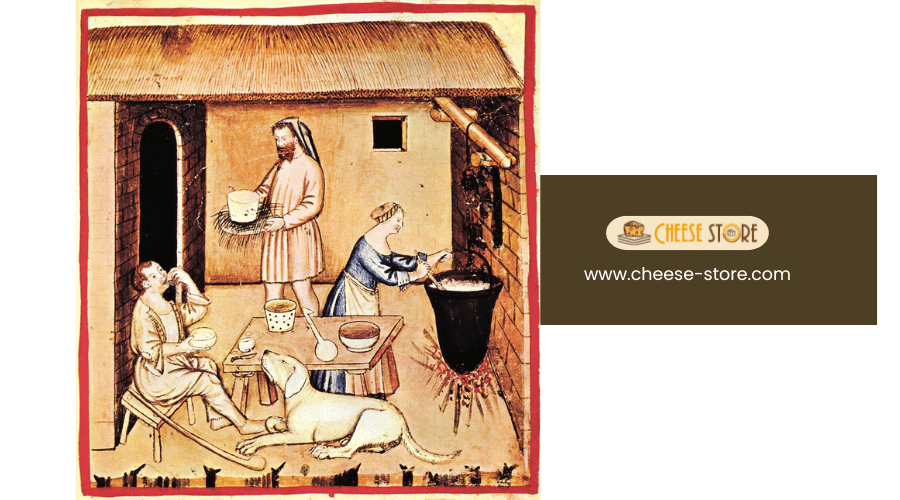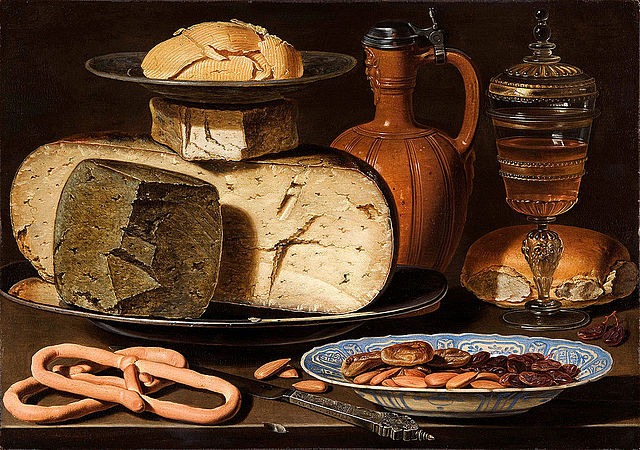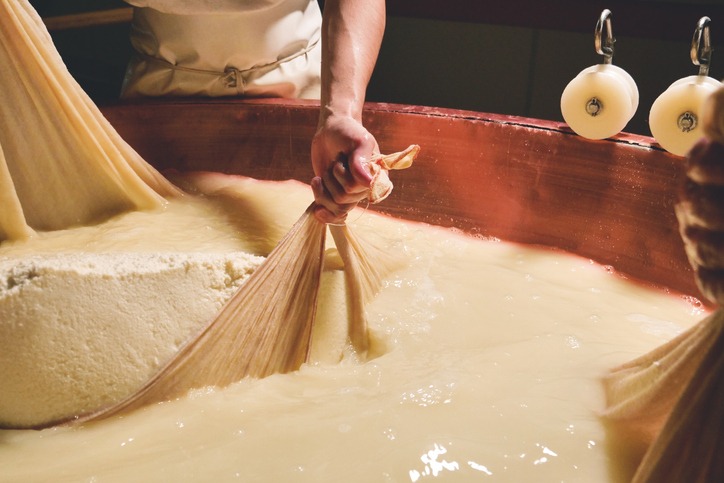When you savor a slice of Roquefort, you’re not just indulging in a sharp, tangy cheese; you’re experiencing a piece of culinary history that dates back to the caves of Combalou. This journey through cheese-making across cultures reveals how ancient techniques have intertwined with local traditions to create the vast array of cheeses we enjoy today. From the soft, fresh cheeses of the Mediterranean to the complex, aged varieties of Europe, each region’s cheese tells a story of its people and their land. As we explore these diverse origins and innovations, you’ll discover how cheese has become a universal language of flavor, connecting us across continents and centuries. Why do certain cultures favor specific types of cheese, and how have modern culinary trends influenced traditional cheese-making? Let’s explore together.
Key Takeaways
- Cheese making evolved from Neolithic discoveries to an artisanal craft celebrated worldwide.
- Cultural innovations, from Roman times to monastic contributions, diversified cheese varieties and techniques.
- Artisanal cheese making emphasizes quality, local ingredients, and traditional methods, gaining global recognition.
- Exotic cheeses reflect local traditions, offering unique flavors and culinary experiences across cultures.
Ancient Origins
Cheese making’s journey began in 8000 BCE when Neolithic farmers first stumbled upon this transformative process. You might find it fascinating that your favorite dairy delight has origins likely rooted in a fortuitous discovery. Imagine those ancient farmers’ surprise when they realized that storing milk in containers made from animal stomachs transformed it into something entirely new and delicious. This early cheese, found on pottery fragments in Turkey from the 7th millennium BCE, wasn’t just a novel food item; it became a survival tool, providing essential nutrients in a long-lasting form.
As cheese’s popularity grew, so did its varieties and the techniques to make them. By the time the Roman Empire came around, cheese had cemented its place in diets across continents. The Romans were instrumental in spreading cheese making techniques, and their influence likely introduced cheese to new regions, laying the groundwork for its evolution throughout history.
Fast forward to the Middle Ages, and you’ll find monks quietly revolutionizing cheese making. They refined and perfected the art, contributing significantly to the diverse flavors and textures we enjoy today. Their monasteries became centers of cheese innovation, a legacy that’s still palpable in some of the world’s most beloved cheeses.
Evolution in Europe
As you explore the evolution of cheese making in Europe, you’ll uncover how the Roman Empire’s expansion set the stage for ancient innovations. You’ll also learn about the pivotal role monasteries played during the Middle Ages, not just in preserving traditions but in refining cheese-making techniques. Finally, we’ll look at how modern industrialization has shifted the landscape, bringing about a rich diversity of cheeses that continue to captivate palates worldwide.
Ancient Roman Innovations
During the Roman era, innovative cheese-making techniques were introduced, greatly enhancing flavors and methods across Europe. This period saw Roman innovations revolutionize the way cheese was produced, laying the groundwork for the diverse European cheese culture we celebrate today. They experimented with different types of milk and aging methods, which contributed to the creation of various regional cheese varieties.
| Aspect | Roman Contribution | Impact on Europe |
|---|---|---|
| Types of Milk | Utilization of cow, goat, and sheep milk | Diversification of flavors |
| Aging Methods | Development of aging techniques | Enhanced texture and taste |
| Spread | Expansion across the empire | Widespread cheese production |
| Dietary Staple | Integral part of Roman diet | Increased demand for cheese |
| Cheese Varieties | Creation of regional specialties | Basis for modern diversity |
Roman advancements in cheese-making techniques not only enriched their own diets but also fostered the growth of a rich cheese tradition throughout Europe.
Medieval Monastic Contributions
Following the Roman era’s significant advancements, medieval monasteries emerged as pivotal centers for furthering Europe’s cheese-making expertise. During the Middle Ages, monks played a critical role in refining cheese production methods and introducing new varieties. Their monastic contributions led to the development of iconic cheeses like Gouda, Munster, and Port-Salut, which remain popular today. These monasteries served not only as centers of innovation but also as custodians of cheese-making traditions, preserving and passing down knowledge through generations. The influence of medieval monastic cheese-making has been profound, continuing to shape the artisanal cheese industry. Through their dedication, monks guaranteed that the art of cheese-making would evolve and flourish, leaving a lasting legacy that enriches our culinary experiences even today.
Modern Industrialization Shifts
In the 18th and 19th centuries, European cheese production underwent a transformative shift towards industrialization, remarkably changing the landscape of cheese-making. This evolution in Europe is pivotal in understanding how cheese has become a staple in diets worldwide. Here’s what you need to know:
- Industrialization began shifting cheese-making from manual to mechanized processes.
- This shift resulted in higher production volumes, meeting the growing demand efficiently.
- Despite the shift, European countries like France, Italy, and Switzerland found ways to preserve their artisanal cheese-making traditions.
- Traditional methods were adapted, creating a unique blend of old-world charm with new-age efficiency.
Innovations in America
You’ve seen how cheese making has evolved in Europe; now, let’s turn our attention to America, where innovation has redefined the tradition. Starting from the early roots in the 1600s, America has embraced modern technological advancements and witnessed a rebirth of the artisanal movement, focusing on small-scale production and unique flavors. These shifts have positioned the U.S. as a leading force in the global cheese industry, showcasing a remarkable journey from traditional practices to cutting-edge techniques.
Early American Cheese Roots
Cheese-making in America began in the 1600s, evolving greatly with the establishment of the first cheese factory in 1851. The history of cheese dates back centuries, but it’s in the early American cheese roots where you’ll find a unique blend of culinary traditions shaping what we consider popular cheeses today. Here’s how it unfolded:
- European settlers brought cheese-making traditions in the 1600s.
- The first cheese factory in New York in 1851 revolutionized production.
- By the 19th century, Cheddar became a beloved American cheese for its sharp flavor.
- Industrialization made cheese more accessible to everyone, marking the start of mass production.
This journey through early American cheese innovations reveals a rich tapestry of culinary evolution.
Modern Technological Advancements
Building on its storied past, America’s cheese-making scene has embraced modern technological advancements, greatly enhancing production efficiency and scale. Innovations like automated cheese vats and robotic cheese makers have revolutionized the industry. You’ll find that modern technology allows for precise control over temperature, moisture, and other critical variables, ensuring consistent quality and flavor profiles in cheese products. This leap forward in technology hasn’t just improved quality; it’s also enabled American cheese manufacturers to meet the growing demand for diverse and innovative cheese varieties. By leveraging cutting-edge equipment, the industry has transformed, ensuring that cheese lovers across the country and beyond have access to an ever-expanding selection of cheeses.
Artisanal Movement Rebirth
Revitalizing customary methods, the craftsman movement in America has brought a fresh perspective to cheese-making, focusing on handcrafted quality and innovative flavors. This resurgence emphasizes:
- Artisanal Cheese-Making: Small-scale producers are dedicating themselves to crafting cheeses that reflect a deep commitment to quality and craftsmanship, integrating traditional methods with a twist of creativity.
- Traditional Methods: A return to time-honored techniques vital each cheese is a vital to the art of cheese-making.
- Local Ingredients: By prioritizing local ingredients, these artisans support sustainable practices and the local economy, enriching the flavors in their cheeses.
- Global Recognition: American artisanal cheeses have made a mark on the global stage, celebrated for their innovation and the revival of handcrafted, small-batch production techniques.
Exotic Varieties Worldwide
Around the globe, you’ll discover cheese varieties that truly capture the essence and traditions of their local cultures. The uniqueness of flavors, intricate aging processes, and various cheese-making techniques contribute to the creation of exotic varieties that are a proof of the ingenuity of local artisans. These cheeses not only offer a taste of their homeland’s culinary heritage but also invite you to explore the diversity of cheese beyond the familiar.
| Country | Cheese | Unique Feature |
|---|---|---|
| France | Over 1,200 types | Rich diversity showcasing deep cheese culture |
| Japan | Sakura Cheese | Infused with cherry blossoms for a floral twist |
| Australia | Wattleseed Cheese | Features native wattleseed for a nutty, aromatic flavor |
| Norway | Gammelost | Aged over a year, known for its strong, pungent taste |
Each of these cheeses stands out for its unique incorporation of local ingredients or traditional methods, offering you a slice of the region’s culture and natural bounty. From the floral notes of Japan’s Sakura Cheese to the deeply traditional, pungent Gammelost of Norway, there’s a world of flavors waiting to be explored.
The Artisanal Renaissance
In recent years, there’s been a significant resurgence in artisanal cheese-making, celebrating traditional techniques and premium ingredients. This culinary renaissance is all about immersing in the roots of cheese craft, emphasizing the art of handcrafted cheeses. Artisans pour their heart and soul into each batch, ensuring that you’re not just tasting cheese but experiencing a story of heritage and passion.
Here’s how you can immerse in the world of artisanal cheese-making:
- Explore local cheese shops: Seek out shops specializing in artisanal cheese-making to discover unique flavor profiles.
- Attend cheese-making workshops: Get hands-on experience with traditional methods and learn the secrets behind crafting the perfect cheese.
- Join cheese tasting events: Immerse yourself in the sensory experience of tasting handcrafted cheeses, often presented on wooden boards to enhance their natural beauty.
- Research the history: Understand the time-honored techniques passed down through generations, adding depth to your appreciation of artisanal cheeses.
Artisanal cheese-making is not just about the end product but the journey of craftsmanship, attention to detail, and the revival of traditional methods. As you immerse in this vibrant culinary field, you’re not only indulging in delicious cheeses but also supporting a rich, cultural heritage.
Pairings and Traditions
Exploring the diverse world of cheese pairings can deeply enrich your culinary journey, as each culture offers unique combinations that highlight regional flavors and traditions. Imagine sipping a robust French wine perfectly matched with a creamy Camembert, or savoring the sharp tang of an English cheddar complemented by the sweetness of fruit. These pairings aren’t just about taste; they’re steeped in cultural significance, reflecting centuries of tradition and culinary validation.
Different regions bring their own flair to cheese pairings, often using local products to balance flavors and textures. In Mediterranean areas, you might find cheese served alongside fresh bread and olives, creating a harmony of tastes that speaks to the region’s culinary heritage. Across the Atlantic, North Americans prefer pairing cheese with jam and crackers, a confirmation to the continent’s love for mixing sweet and savory.
Understanding these traditions isn’t just about enjoying different cheese varieties; it’s a window into the cultural heart of each region. The way cheese is paired can tell you a lot about local tastes, ingredients, and even history. So, as you explore the world of cheese, let these pairings guide you through an unforgettable journey of flavors and textures, connecting you to the rich tapestry of global culinary practices.
Conclusion
As you’ve journeyed through the history of cheese-making, you’ve seen how it’s evolved from ancient discoveries to modern artisanal wonders. Each culture’s unique techniques and flavors tell a story of tradition and innovation. Now, with a global palette at your fingertips, you’re not just tasting cheese; you’re savoring centuries of culinary art. Embrace this renaissance of artisanal cheese, explore pairings, and celebrate traditions. Your culinary adventure is just beginning, enriched by the rich tapestry of cheese history.




